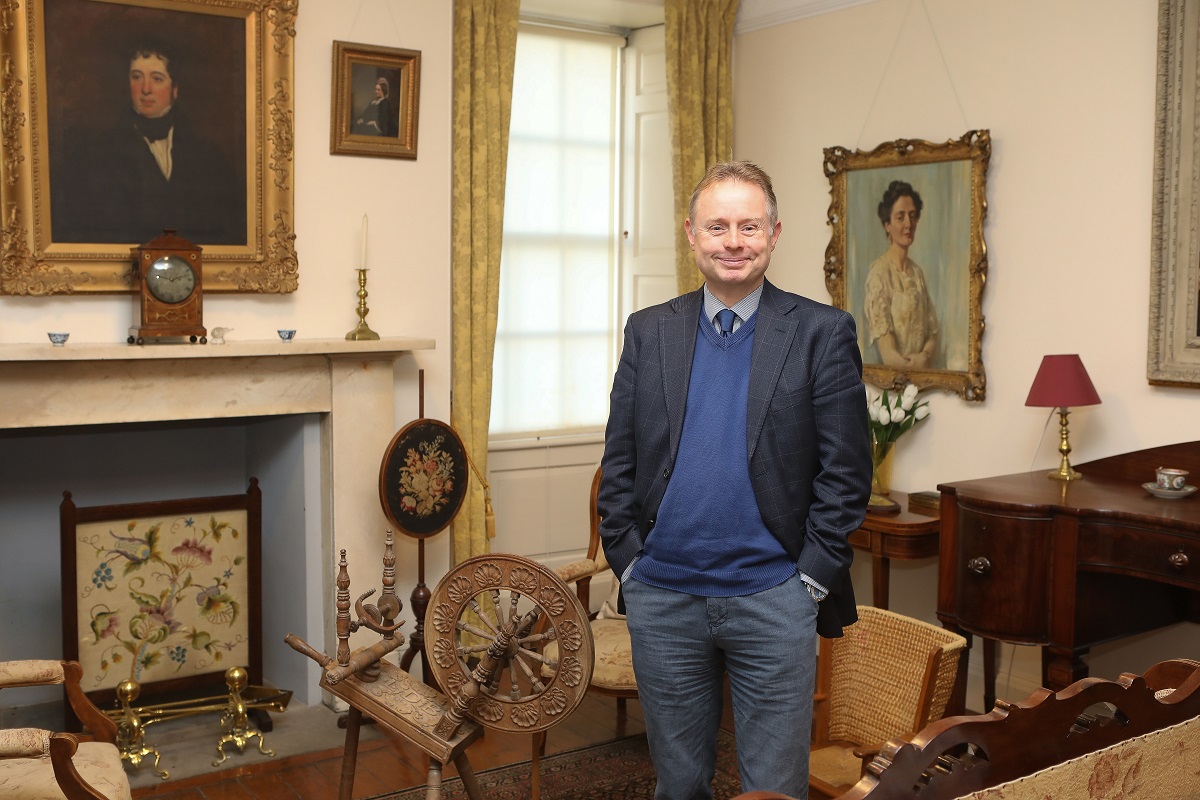Museums team welcomes Nick
Date: 30 November 2021

This month has seen the Council’s Museums team welcome Nick Hewitt as Team Leader.
Nick comes to the Council after eight years working with The National Museum of the Royal Navy - latterly as the Head of Collections and Research, having also held the post of Head of Heritage Development – and Head of Collections (Explosion) – where he was responsible for the weapons held at Explosion Museum of Naval Firepower.
Nick has also worked with the Portsmouth Naval Base Property Trust as their Head of Attractions and Collections, and served as Historian for the Imperial War Museum in London.
He holds a Masters degree in War Studies from Kings College, London, where he specialised in naval history.
As Team Leader, Nick is responsible for leading all the Arts and Museums teams across Orkney and ensuring the successful day to day operation of the Orkney Museum, St Magnus’ Cathedral, Kirbuster and Corrigall Farm Museums, and Scapa Flow Museum. He is looking forward to working with heritage partners across Orkney.
One of his first tasks with the Council was to oversee the relocation of some of the county’s most loved big artefacts from the Scapa Flow Museum last week as they go undercover for some much needed TLC.
This included two guns from the decks of German warships scuttled in the Flow – SMS Bremse and SMS Karlsruhe – both now safely in storage awaiting conservation. “These guns are two of only five First World War German naval guns surviving in the UK – as such they are of huge significance within the UK, and it’s absolutely right to take them indoors now and seek funding for specialist work to conserve them. Once that work is done, it will be equally important to keep them inside in a controlled environment, to ensure they can continue to help tell the story of Orkney’s and the UK’s naval history, for another 100 years.”
Gwenda Shearer is chair of the Council’s Education, Leisure and Housing Committee. She said: “I am sure I speak for the team when I say how pleased we are to have Nick on board helping ensure Orkney’s rich arts, culture and heritage is captured, promoted and celebrated.
“It’s especially exciting to have Nick join us as the focus for the Scapa Flow Museum shifts from construction to the highly involved task of creating the visitor experience inside and out.
“With Nick’s extensive historical knowledge and museum experience and the professionalism and intimate knowledge of the rest of the team about the exhibits in our care I have no doubt that Orkney’s world war story will be powerfully rendered at Scapa Flow Museum, and brought to life in new and exciting ways for all visitors to enjoy.”
Nick already has a link with some very special items held by the Scapa Flow Museum.
In 2015 and 2016, during his time with The National Museum of the Royal Navy (NMRN) in Portsmouth, Nick oversaw the loan of two guns from the Scapa Flow Museum which had seen action in the battle of Jutland.
The large deck gun from the German destroyer B98, and a smaller deck gun from HMS Opal were loaned to the NMRN, to be part of the UK’s main exhibition there telling the story of the pivotal maritime battle off WWI.
As part of the loan arrangement, the NMRN carried out extensive conservation work on the guns, before they were returned to Orkney following Jutland commemorations - they are now safely stored in the Romney Hut on the site of the Scapa Flow Museum.
Nick said: “I feel like I have done full circle with these items! It’s an honour and privilege to be working with them again in this chapter of my career.”
The Royal Navy’s Grand Fleet was based at Scapa Flow during WW1.
The Battle of Jutland between the Royal Navy’s Grand Fleet and the German High Seas Fleet - the two most powerful naval fleets of the time – took place on May 31– June 1, 1916.
It was a military engagement which led to 6,000 British and 2,500 German personnel lost.
German destroyer B98 was the leader of the 2nd Flotilla of the German High Seas Fleet at Jutland. The ship later went aground in the Bay of Lopness in Sanday, where parts of B98 can still be seen – the base plates of the hull survive, along with boilers and turbine casings.
HMS Opal took part in the Battle of Jutland as part of the 12th Flotilla.
In January 1918, while on a Dark Night Patrol in severe weather and with poor visibility, an unfortunate navigational error caused HMS Opal and her sister ship HMS Narborough to sail straight into the cliffs at Hesta Rock on South Ronaldsay. Both ships were wrecked with 188 casualties and only one survivor.
The Scapa Flow Museum charts Orkney’s military involvement in the First and Second World Wars and provides a safe home for a major collection of wartime artefacts, many of national and international importance.
It is currently undergoing a refurbishment project valued at of £4.4 million, comprising an extension to the Museum and refurbishment of the historicpumphouse, supported by Orkney Islands Council, the National Lottery Heritage Fund, Historic Environment Scotland, the Orkney LEADER 2014-2020 programme, Highlands and Islands Enterprise, Museums Galleries Scotland, and the Scottish Government’s European Regional Development Fund programme, managed by NatureScot through the Natural & Cultural Heritage Fund. (The Natural & Cultural Heritage Fund is part of the Scottish Government’s European Regional Development Fund programme, which finishes in 2023. NatureScot is also managing another element of the programme – the Green Infrastructure Fund. The Scottish Government is the Managing Authority for the European Regional Development Fund and the European Structural Funds 2014-20 Programme. For further information visit the Scottish Government website or follow @scotgovESIF.)
It is due to reopen in early summer 2022.
-
Category:
- Leisure and Culture
- Scapa Flow Museum





